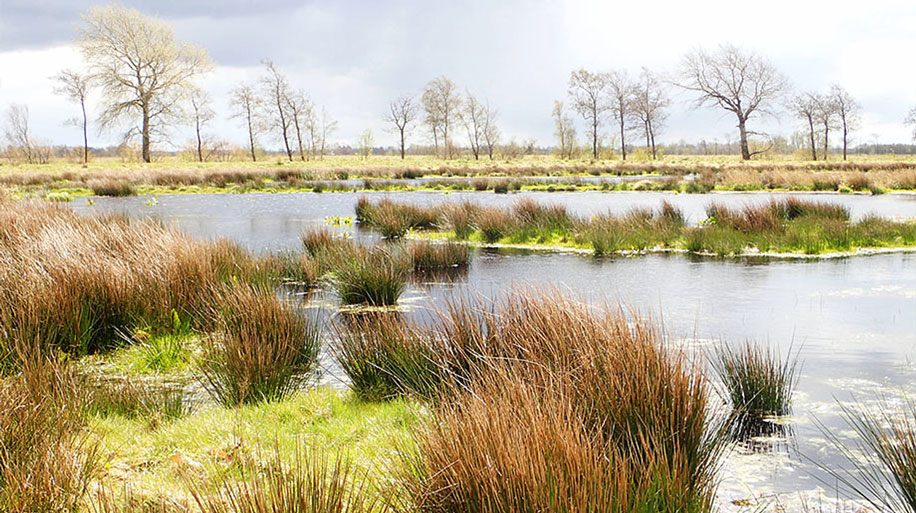Eurowings is offering CO2 compensation for projects in Germany for the first time. The two new climate protection projects are the Königsmoor near Hamburg, where Eurowings is the largest airline, and the “Gelliner Bruch” moor area in Mecklenburg-Western Pomerania.
The voluntary compensation is organized by the non-profit Swiss climate protection organization Myclimate and local sustainability organizations and is certified according to the recognized Moor Futures project standard, while all other Eurowings compensation offers bear the premium “Gold Standard” seal of approval.
Offsetting when booking a flight has been made easier on the Eurowings website, the contributions finance Moor Futures certificates, whereby private individuals, companies or institutions participate in financing the implementation of the projects through offsetting. Travelers who have opted for carbon offsetting for their flight will receive proof of their offsetting in the booking confirmation.
The climate protection project standard Moor Futures was founded in 2012 as the world’s first climate protection certificate for the rewetting of moors by the three moor-rich federal states of Mecklenburg-Western Pomerania, Brandenburg and Schleswig-Holstein in partnership. The implementation of the project and the scientific monitoring of the climate impact is coordinated and financed by the Schleswig-Holstein Compensation Agency, a 100 percent subsidiary of the Schleswig-Holstein Nature Conservation Foundation
“Our passengers can now easily combine climate-neutral travel with the support of regional compensation projects,” says Eurowings CEO Jens Bischof.
Further details on the two projects, as well as others worldwide, are available on the Eurowings website.
Both German projects deal with the renaturation of moors. The following information is taken from the Myclimate website….
“In the 20th century, more than 95 percent of all raised and fens in Germany were drained by the digging of canals and ditches and used for agriculture or forestry, or their peat was mined as a cheap source of fuel. Cultivation of the moorland exposed the carbon stored in the soil, which continuously oxidizes in the atmosphere. With more than 40 million tons of CO₂ released every year, drained peat soils are responsible for 40 percent of all agricultural greenhouse gas emissions in Germany. As a result of rewetting, typical raised bog vegetation can develop in the long term, which helps to bind CO2 efficiently and create a valuable habitat for many endangered species.”
Koenigsmoor
“The areas in Königsmoor were acquired by the Schleswig-Holstein Nature Conservation Foundation and converted from intensive to extensive cultivation without fertilization. For full restoration, all ditches and drains in the bog must be closed and low peat walls built to keep the rainwater, which is then stored in the peat, inside the bog and keep the bog moist all year round.”
Moor landscape “Gelliner Bruch”.
“The Gelliner Bruch moorland in the Ramin district not far from the German-Polish border in Mecklenburg-Western Pomerania can be restored to its natural state. This will significantly reduce the amount of greenhouse gases emitted into the atmosphere. But not only the climate will benefit from this, but also biodiversity, especially the local birdlife, as swamps and wetlands are important refuges and breeding areas for them.”
“Until the 1970s, the peat mass in the north-eastern part of the Gelliner Bruch was up to seven meters thick. Bogs form over thousands of years from the remains of dead plants that do not fully decompose due to lack of oxygen. This results in continuous peat formation – on average, the peat mass has grown by about 1 mm per year, which means in the case of the Gelliner quarry for more than 7,000 years. This changed in the 1970s when the Gelliner Bruch was drained with pumps and ditches and intensively farmed as pastureland. As a result of the draining, the peat mass was decimated and the moor bed lowered. As part of the rewetting project, pumps were shut down, drainage ditches were filled and old water inflows were restored. Thanks to the climate protection project, the progressive peat extraction could be stopped, so that the peat layer of the Gelliner quarry could again become a carbon store and no longer a source of greenhouse gases”.
eurowings.com




